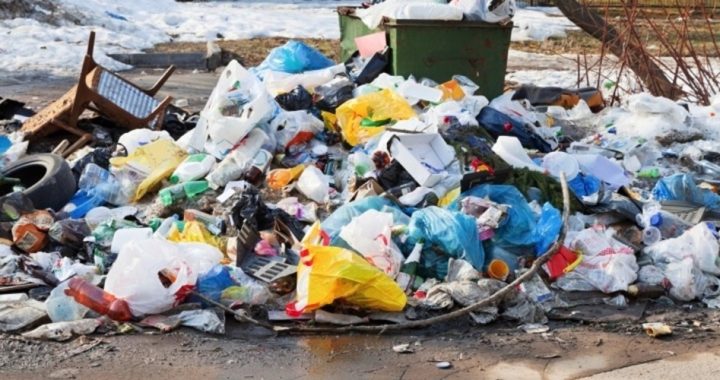
Now that credit rating agency Standard & Poor’s has ended the suspense by announcing that it is cutting Puerto Rico’s $70 billion worth of general obligation bonds to junk status, questions about the island’s economic future abound.
Will Fitch and Moody’s follow suit as they warned they probably would back in December? If the country can’t arrange other financing to cover its budget shortfalls as it has been doing since 2000, what will happen? With 70 percent of triple-tax-exempt bond funds in the United States holding some Puerto Rican debt, how much money will their investors lose? What will happen when investment managers who can no longer legally hold junk bond debt in their portfolios try to sell what they already have? To whom? For how much?
What about the hapless 3.6 million taxpayers on that balmy tropical isle? Will they be required to suffer further mulcting? What about the American taxpayers? Will the Obama administration bail it out with their taxes?
The Puerto Rican government has managed to sell $70 billion worth of its paper to investors, taking advantage of the subsidy already provided by the federal government in the form of allowing interest payments to be free from taxes at the federal, state, and local level. Since Puerto Rico is a territory under the Constitution (see Article IV, Section 3), it is subject to congressional mandates in nearly every area, including citizenship, its currency (the dollar), the U.S. Postal Service, foreign affairs, military defense, communications, labor relations, the environment (yes, even the EPA), commerce, finance, and health and welfare (i.e., Social Security).
The downgrade from Standard & Poor’s came much more rapidly than even Michelle Kaske expected. On January 29 she suggested in Bloomberg that Puerto Rico was in danger of losing its investment-grade rating, noting that it would raise the cost of servicing the country’s existing debt by a billion dollars a year.
The very next day Kaske quoted analysts at UBS Wealth Management who expected at least one of the credit rating agencies to cut Puerto Rican debt to junk within the next 30 days. That same day, Standard & Poor’s pulled Puerto Rican bonds from its tax-free municipal bond index, explaining that they “no longer meet the objective established by this investable investment-grade index.” Four days later S&P made its announcement, with widely held speculation that Moody’s and Fitch aren’t far behind.
The downgrade no doubt also surprised Puerto Rico’s Governor Alejandro Garcia Padilla, who has made huge public relations efforts to explain that things aren’t really that bad in his country. On November 7 he announced that, thanks to his Jobs Now Act, his administration was halfway to his goal of creating 50,000 new jobs during his first 18 months in office. Since replacing incumbent Governor Luis Fortuño in January 2013, Padilla boasted:
We have surpassed 25,000 new jobs and there will be more, many more, because we won’t rest until desolation is replaced by the hope for a better, more prosperous and more just Puerto Rico.
He then listed just where those jobs were coming from and observers quickly noted that more than 15,000 of them were only “pledged” to be filled at some uncertain time in the future. Nevertheless Padilla pressed on, writing in the Huffington Post on January 16 that his administration had “enacted the most comprehensive, meaningful and sweeping pension reforms in Puerto Rico’s history. We saved the Commonwealth’s Employees Retirement System and guaranteed its solvency for decades to come.” He added:
My administration also enacted new fiscal measures that produced $1.35 billion in revenues….
We are … investing in renewable energy and natural gas projects….
Our efforts have reaped clear rewards: thousands of new jobs, a reduced deficit, pension reform, new revenue creation, and new investments.
It will not get easier, but I am confident that we have taken the right actions to rebuild Puerto Rico toward a brighter future.
His public relations efforts failed to persuade Standard & Poor’s. The headwinds facing Puerto Rico are just too overwhelming. The island’s government has run a deficit every year since 2000, and has financed it, up until now, by going to the credit markets. The country’s economy has been in recession for eight straight years. The unemployment rate is more than twice that of the United States, and its population is shrinking as those residents who can (more than 40 percent of them live at or below the poverty level) are moving to Florida for better job opportunities. It’s had to fund its chronic deficits with expensive short-term bank loans since at least last September when the storm clouds became too obvious for lenders to ignore. A fifth of the working population is employed by the government, the pension plans are underfunded by $30 billion, and the country, despite Padilla’s protestations to the contrary, now appears to be out of options.
Padilla has certainly tried every Keynesian trick in the book. According to CNBC, “taxes and fees have gone up on nearly everything and everyone. Personal income taxes, corporate taxes, sales taxes, sin taxes, even taxes on insurance premiums have been hiked or newly imposed.” The water company hiked its rates by 67 percent in order to service the debt on its own separate obligations. And those pension plan improvements have been financed by cuts in benefits, extensions in retirement dates, and increased contributions from present workers.
As all of this was coming to a head, David Agnew, co-chair of President Obama’s Puerto Rico Task Force, explained that the U.S. taxpayer wouldn’t be funding any sort of bailout for Puerto Rico:
[This] interagency team will offer strategic advice to assist Puerto Rico in promoting its economic development and maximizing the impact of existing federal funds [already] flowing to the island.
These efforts are not a federal intervention. Rather, these policy experts will share their expertise with the Puerto Rican officials leading the commonwealth’s economic efforts.
Just what are those “federal funds already flowing to the island?” In a little known backroom maneuver engineered by the Obama administration in cooperation with a law firm advising the country, the island’s government imposed an excise tax on every U.S. company that had a manufacturing facility operating on the island. It was announced on October 22, 2010, approved the next day, and signed into law three days later. The tax was projected to generate $6 billion over the next five years.
The lawyers pointed out that because Puerto Rico is considered a “foreign jurisdiction,” those excise taxes would be credited against any income taxes owed. Voila! The U.S. treasury — the U.S. taxpayers — would be paying the tax. But this isn’t really a bailout, according to Mary Miller, Treasury undersecretary for domestic finance who, picking her words very carefully, said, “I don’t want to convey that that translates into a direct ‘ask’ for federal direct assistance, because that is not contemplated at this time.”
As the financial unraveling continues in the Caribbean, tax analyst Martin Sullivan noted in Forbes:
A lot of powerful interests like the current situation. They include the government and both major parties in Puerto Rico, the Obama administration … and U.S. multinationals that can credit the tax.
The only ones on the short end of the stick are U.S. taxpayers, who are footing the bill.
It’s almost a law: Whenever an entity of any kind gets in trouble, be it a domestic carmaker or a foreign government, the final backstop is inevitably the U.S. taxpayer. So it is in Puerto Rico.
A graduate of Cornell University and a former investment advisor, Bob is a regular contributor to The New American magazine and blogs frequently at www.LightFromTheRight.com, primarily on economics and politics.



